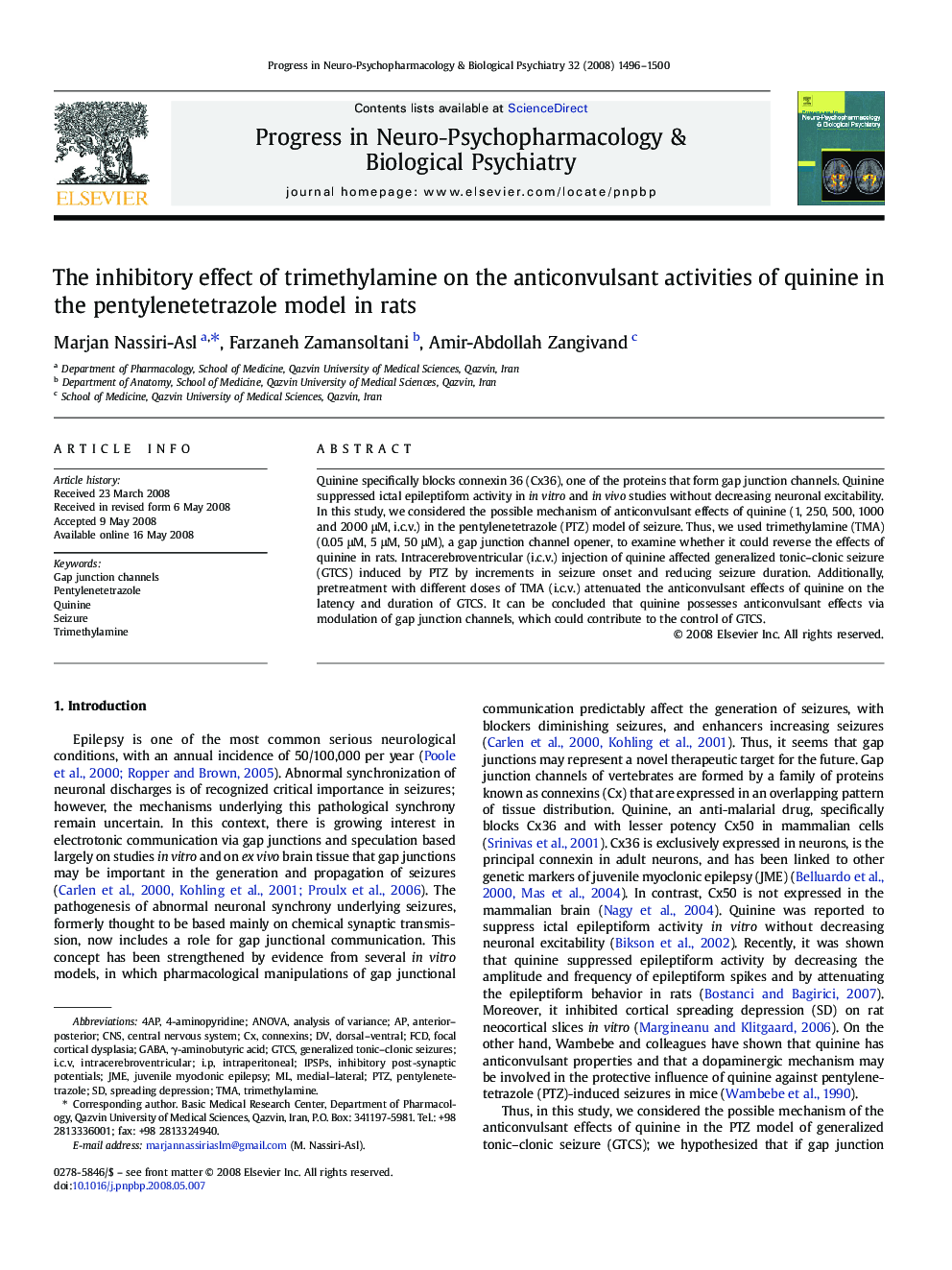| Article ID | Journal | Published Year | Pages | File Type |
|---|---|---|---|---|
| 2565619 | Progress in Neuro-Psychopharmacology and Biological Psychiatry | 2008 | 5 Pages |
Abstract
Quinine specifically blocks connexin 36 (Cx36), one of the proteins that form gap junction channels. Quinine suppressed ictal epileptiform activity in in vitro and in vivo studies without decreasing neuronal excitability. In this study, we considered the possible mechanism of anticonvulsant effects of quinine (1, 250, 500, 1000 and 2000 μM, i.c.v.) in the pentylenetetrazole (PTZ) model of seizure. Thus, we used trimethylamine (TMA) (0.05 μM, 5 μM, 50 μM), a gap junction channel opener, to examine whether it could reverse the effects of quinine in rats. Intracerebroventricular (i.c.v.) injection of quinine affected generalized tonic-clonic seizure (GTCS) induced by PTZ by increments in seizure onset and reducing seizure duration. Additionally, pretreatment with different doses of TMA (i.c.v.) attenuated the anticonvulsant effects of quinine on the latency and duration of GTCS. It can be concluded that quinine possesses anticonvulsant effects via modulation of gap junction channels, which could contribute to the control of GTCS.
Keywords
FCDGap junction channelsi.c.vGTCSJMEconnexinsIPSPsi.p4APintracerebroventricularTMAPTZ4-aminopyridineγ-aminobutyric acidanalysis of varianceANOVAtrimethylamineseizuregeneralized tonic–clonic seizuresintraperitonealCNSfocal cortical dysplasiacentral nervous systemJuvenile myoclonic epilepsyanterior–posteriormedial–lateralinhibitory post-synaptic potentialsdorsal–ventralPentylenetetrazoleQuinineGABASpreading depression
Related Topics
Life Sciences
Neuroscience
Biological Psychiatry
Authors
Marjan Nassiri-Asl, Farzaneh Zamansoltani, Amir-Abdollah Zangivand,
